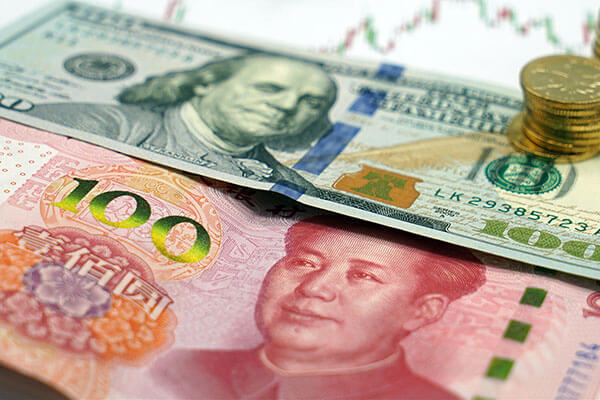Forex trading gains and losses refer to the profits or losses
generated during trading in the forex market based on the price
difference between buying and selling. The calculation method for profit and
loss of trade is based on the difference between the
buying price and the selling price of the trade in the basic currency.

Firstly, we need to understand some basic concepts in forex trading. Currency trading in the forex market are conducted in
the form of currency pairs, including the base currency and the quoted currency.
The basic currency is the first currency in a trade, while the quoted
currency is the second currency in a trade. For example, in the EUR/USD
currency pair, the euro is the base currency and the US dollar is the quoted
currency.
When we engage in forex trading, we can choose to buy or sell
currency pairs. If we expect the price of a currency pair to rise, we can choose
to buy the currency pair, which is called taking a long position. On the
contrary, if we expect the price of a currency pair to decline, we can choose to
sell the currency pair, which is called short selling.
In forex trading, profit and loss are calculated based on the
difference between the buying and selling prices. If we buy a currency pair and
the price rises, we can sell the currency pair to earn a profit. At this point,
our profit is calculated based on the selling price minus the buying price. On
the contrary, if we buy a currency pair and the price drops, we will lose money
by selling the currency pair. At this point, our losses are calculated based on
the buying price minus the selling price.
The calculation method for forex trading profit and loss can be
expressed by the following formula:
Profit and loss = (selling price minus buying price) × trading volume × the
value of each point
Among them, the value of each point refers to the minimum unit of change in
currency relative to price. Different currency pairs have different values for
each point, depending on the pricing method of the currency pair. For example,
in an EUR/USD currency pair, the value of each point is usually $0.0001.
In addition to the above calculation methods, forex trading gains
and losses can also be viewed through the trade history provided by the
trading platform. The trade history will display the buying price, selling
price, trading volume, and profit and loss situation of each trade. By
viewing trade history, we can understand the profit and loss situation of
each trade as well as the overall profit and loss situation.
The following example will demonstrate the method and process of calculating forex trading gains and losses for you:
Assuming the current EUR/USD quote is 1.4616/19, it means you can buy 1 euro
for $1.4619 or sell 1 euro and buy $1.4616 at the same time.
Suppose you predict that the euro will appreciate against the US dollar, so
you are willing to buy EUR (while selling USD) and wait for the exchange rate to
rise.
So, you bought 100000 euros (100000 x 1.4619) for $146190. Using a margin
leverage of 1:100, your margin account needs to have $1461.
As you expected, EUR/USD has increased to 1.4623/26. In order to achieve
profits, you sold 100,000 euros at a price of 1.4623 and received $146230.
You previously bought 100000 euros for $146190, but now you sell 100000 euros
and exchange them for $146230. The difference between them is 4 points, which is
$40 ($146190-146230 = $40).
Total profit: $40
In the same example, suppose you still buy 100,000 euros for $146190 at the
EUR/USD quote of 1.4616/19.
However, this time the EUR/USD fell to 1.4611/14. To reduce losses, you chose
to exit at this price, selling 100,000 euros and exchanging them back for
$146110.
You previously bought 100000 euros with $146190, but now you sell 100000
euros and exchange them back for $146110. The difference between them is 8
points, which is $80 ($146190 minus $146110 = $80).
Total loss: $80
When conducting forex transactions, we need to pay attention to
risk management. The trading market is highly volatile, and there may
be significant fluctuations in profit and loss. Therefore, we need to reasonably
control trading volume, set stop-loss and stop-gain orders, and develop
reasonable trading strategies to reduce risks and protect fund security.



























